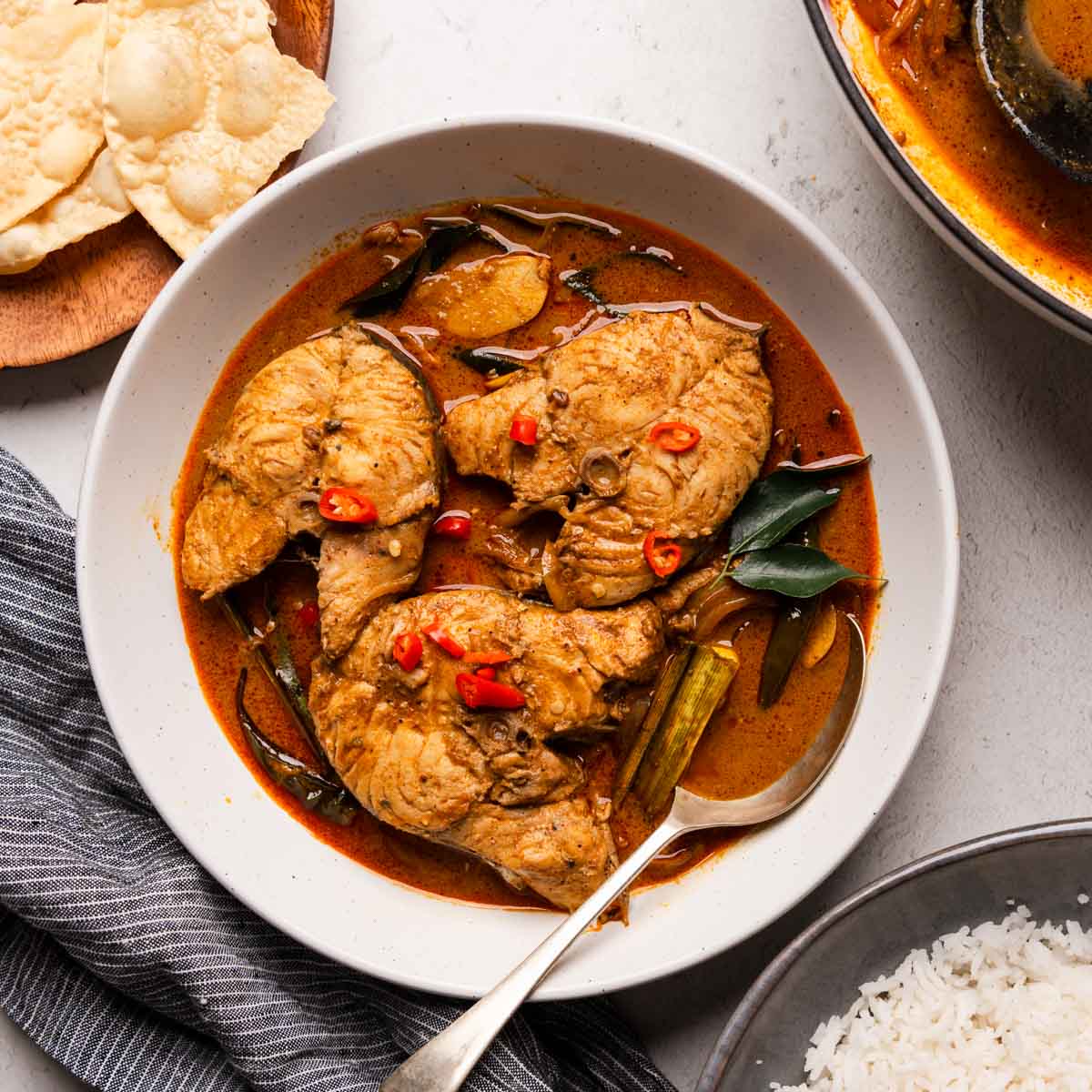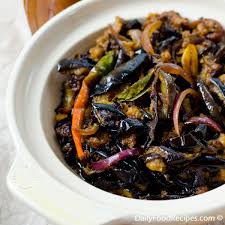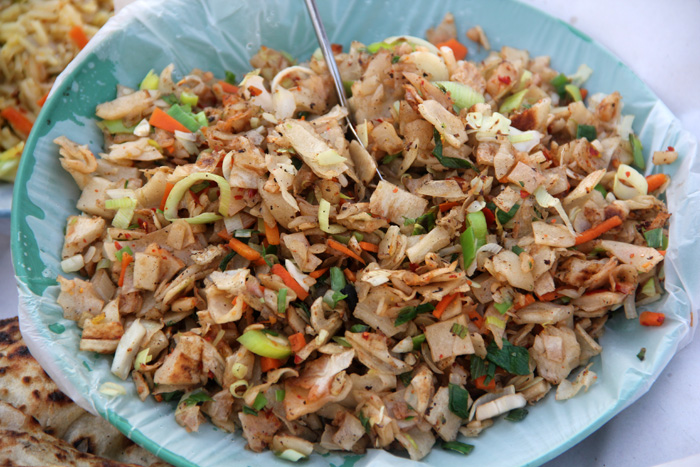Elephants and Egg Hoppers:
Our Sri Lankan Food Expedition

Sri Lanka is an island nation located in the Indian Ocean, to the southeast of Indian . It lies about 30 kilometers (19 miles) off the southern coast of India, surrounded by the Indian Ocean to the south, west, and east, and the Bay of Bengal to the northeast. This strategic location has made it a key maritime hub throughout history. Sri Lanka's cuisine reflects its rich cultural diversity, with flavorful dishes featuring rice, coconut, spices, and seafood. Popular foods include curry, hoppers (a type of pancake), and sambol, offering a delightful blend of sweet, spicy, and savory flavors.


The trip
Our incredible journey through Sri Lanka started in the charming coastal town of Negombo. Negombo is about 20 minutes from the airport and therefor great to hang out after travelling all the way from Tunesia to Sri Lanka. After this long trip, we were more than ready to unwind. We booked a family owned mid range hotel and spent two blissful days lounging by the pool. We were quite happy with our choice as the hotel really served delicious homestyle foods. We could sample some of the local flavors from the ease of the poolside. it was the perfect way to get used to the climate and get ready for our adventure. Trying to find all the delicious dishes Sri Lanka has to offer– We were in for a good surprise, curries, hoppers, and sambols!
From Negombo, we headed to Pinnawala. Having children we knew that visiting the Elephant Orphanage would be a great hit. We found an hotel build on the riverbed had beautiful views over a brown water river with green riversides. Twice a day the Elephants from the orphanage paced down the streets of Pinnawala to go bathing in that exact river. Watching those majestic creatures bathe in the river was truly magical. A sight that you won't forget very fast. The Pinnawala Orphanage takes care of the abandoned elephants of Sri Lanka. This project also needs funding. So selling tickets to go and see the Elephants in the Orphanage and all other stops to make the Orphanage a touristic attraction created them a good income stream. Part of the tickets were also to chance to go bathing with the ELephants. We chose to even get to join in and spla wash them!
Next up was the Arsulana Eco Lodge, nestled about an hour from Hatton. We spent a peaceful night surrounded by nature, with a beautiful waterfall right outside our room. The following day, we were all set to catch the famous train to Ella, but we quickly learned that booking in advance is a must – the train was fully booked for the next month!
After Hatton, we journeyed south to Yala National Park for an exhilarating three-night stay. The safari was a real highlight, with sightings of leopards, elephants, crocodiles, and so many bird species. The park's breathtaking landscapes only added to the adventure, making it truly unforgettable.
Finally, we made our way to Hikkaduwa, where we spent three wonderful weeks visiting family and soaking up the sun on the beach. The kids loved surfing, while we enjoyed scuba diving and relaxing on the sandy shores. It was the perfect blend of adventure, relaxation, and – of course – delicious food! And that's exactly why we're here to share all about the amazing culinary experiences we had in Sri Lanka.
Food and influences
The Portuguese, who arrived in Sri Lanka in 1505, introduced ingredients such as chili peppers, which are now essential in Sri Lankan curries. They also brought bacalhau (salted codfish) and confectioneries like bolo fiado (layered cake), which evolved into Sri Lanka’s own sweet treats like Bibikkan (coconut cake).
Dutch Influence
The Dutch, who took control in the 17th century, contributed significantly to Sri Lanka’s cuisine, particularly through Lamprais, a dish still popular today. They also introduced pickled foods, which evolved into Sri Lankan achcharu (pickle).
British Influence
The British, ruling from 1815 to 1948, introduced tea plantations, making Sri Lanka one of the world’s largest tea producers. They also brought the concept of bread, puddings, and roast dishes, which are still enjoyed today, especially in urban areas.
Regional Influences on Sri Lankan Food
Apart from colonial influences, Sri Lankan cuisine shares similarities with South Indian, Chinese, and Southeast Asian foods.
Indian Influence: Many Sri Lankan curries and spice blends resemble South Indian dishes, with a heavy use of curry leaves, mustard seeds, and coconut. Dhal curry (Parippu) is one such dish found in both Indian and Sri Lankan households.
Chinese Influence: Fried rice, chili paste, and stir-fried dishes owe their roots to Chinese traders and immigrants. Sri Lankan-style fried rice and devilled chicken are popular at restaurants and street food stalls.
Southeast Asian Influence: The use of lemongrass, pandan leaves, and fermented sauces in some dishes hints at connections to Thai, Indonesian, and Malaysian cuisines.

Staple Foods in Sri Lanka
Rice and Curry – The heart of Sri Lankan cuisine, consisting of steamed rice served with a variety of curries, including chicken (Kukul Mas Curry), fish (Ambul Thiyal), dhal (Parippu), and vegetable curries.
Hoppers (Appa) – A bowl-shaped pancake made with fermented rice flour and coconut milk. Sometimes served with an egg in the center (egg hoppers).
String Hoppers (Idiyappam) – Thin rice noodles pressed into round shapes and steamed, usually served with coconut sambol and dhal curry.
Roti – A simple flatbread made with flour and coconut, eaten with curries or spicy sambols.
Pittu – A cylindrical dish made of rice flour and grated coconut, often paired with coconut milk and curry.
Popular Sri Lankan Curries
Chicken Curry (Kukul Mas Curry) – A fragrant curry cooked with coconut milk, curry leaves, cinnamon, and Sri Lankan spices.
Fish Curry (Ambul Thiyal) – A sour and spicy dry fish curry made with goraka (a sour fruit) to preserve the fish.
Dhal Curry (Parippu) – A simple yet flavorful lentil curry cooked with coconut milk, garlic, and mustard seeds.
Jackfruit Curry (Kiri Kos) – A creamy jackfruit curry made with coconut milk, often used as a vegetarian alternative to meat.
Vegetable Curries – Includes pumpkin curry, eggplant, potato curry, and gotu kola sambol (pennywort salad).
Popular Sri Lankan Street Foods and Special Dishes
Kottu Roti
Kottu is one of Sri Lanka’s most famous street foods, made by stir-frying chopped roti (flatbread) with vegetables, eggs, and meat or seafood. It is prepared on a large iron griddle with two metal blades, creating a rhythmic chopping sound that is iconic to Sri Lankan street food culture.
Lamprais
A dish introduced by the Dutch Burghers, Lamprais consists of rice cooked in stock, accompanied by a mix of meat curry, eggplant moju, seeni sambol (caramelized onion relish), and frikkadels (Dutch-style meatballs), all wrapped in a banana leaf and baked.
Pol Sambol
A spicy coconut relish made with grated coconut, red chili powder, lime juice, salt, and Maldive fish flakes. It is a staple side dish often eaten with rice, hoppers, or roti.
Achcharu
A Sri Lankan-style pickle made with fruits or vegetables (like mango, pineapple, or onions) mixed with vinegar, chili, and mustard seeds. It is a favorite spicy-sour snack.
The Beauty of Sri Lankan Food and Its Natural Abundance
One cannot truly capture the diversity and abundance of fruits and vegetables found in Sri Lanka with just words. Driving through the country, you’ll see a breathtaking landscape filled with endless shades of green—from the lush tea plantations in the highlands to the tropical fruit trees growing wild along the roads. Markets overflow with fresh mangoes, papayas, pineapples, wood apples, and jackfruits, while roadside stalls sell locally grown vegetables and aromatic spices.
To truly understand Sri Lankan cuisine, you have to experience it firsthand—watching food being prepared in village homes, tasting the bold flavors of street food, and sipping on a cup of fresh Ceylon tea while overlooking the rolling tea estates.












